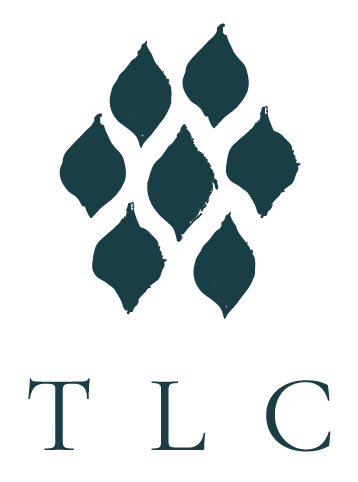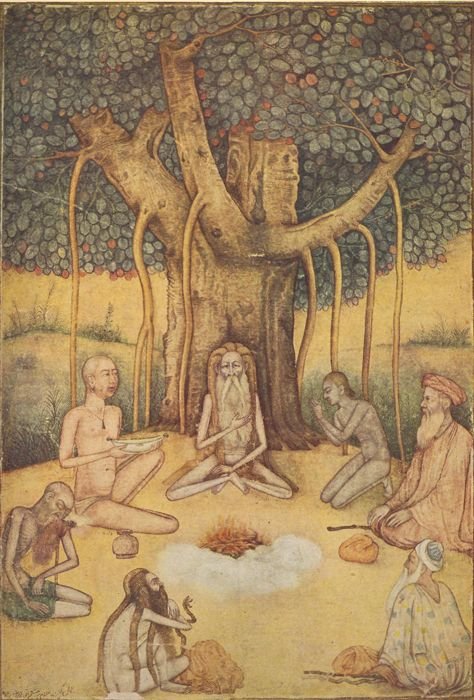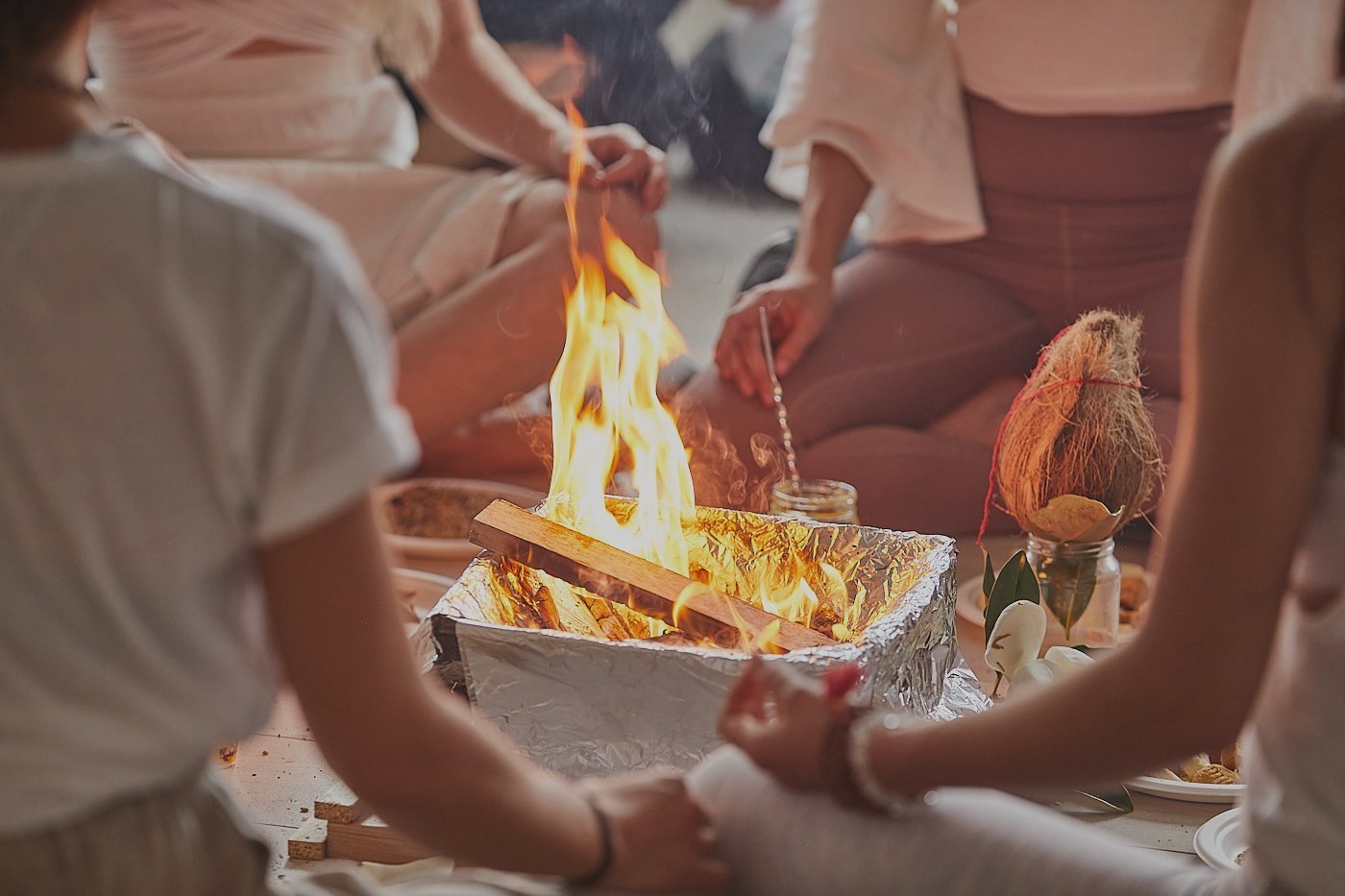What is Tantra?
Unlock the Secrets of Tantra: Its Origins, Philosophy, and Practices
When I mention that I teach Tantric Yoga to people I usually get two responses. The first is total fascination and a million questions, the second is a suppressed shock which is generally followed by them never, ever, asking me about my work again. (Cue my Mum and partner’s parents.) Tantra is a word that's often heard, but its meaning and practices are often shrouded in mystery and confusion. I blame this mostly on Sting, who famously said in the 80’s that thanks to Tantrik Yoga he could make love for 7 hours.
A lot of what we know in the West about Tantra is related to sex and sexuality, when in reality the tradition itself has very little to do with making love. In this post, we'll dive into the origins, philosophy, and practices of Tantra, and how it can be applied to enhance your spiritual and personal growth. I am hoping that in doing this I can clarify this incredibly beautiful and misunderstood stream of yoga, not just so I can have an open conversation with my in-laws about my every day life, but also so that there is a wider understanding of Tantra within the community.
"What is Tantra?"
We can divide the understanding of Tantra into 2 categories:
Classical Tantra - the spiritual tradition that originated in India and flourished between the 5th and 12th Centuries. During this period many thousands of texts were written detailing the Tantrik practices and their commentaries, these were called ‘Tantras.’ The various yogic practices and beliefs were all aimed at elevating consciousness, exploring the nature of reality, and achieving spiritual liberation.
Neo Tantra - a movement created in the early 1900’s in the West that focussed on some of the practices within different streams of Eastern spiritual traditions from the Indian subcontinent to China (Tantra to Taoism) and the ways in which erotic energy could be cultivated and controlled through sacred sexuality practices.
In the world of Tantra you will often find teachers and schools calling themselves Tantrik (the traditional spelling) although what they are teaching is mostly Neo-Tantric, sacred sexuality practices that are very often completely unrelated to classical practices and philosophy. Many have taken some traditional ideas, innovated them with sexology work and new age energy practices. There is nothing necessarily wrong with these practices (in fact I love them and teach some of them)- the problems only arise from the murky boundaries that arise between spiritual teacher, innocent aspirant/ Tantric student and sexuality, which has led to abuse and the muddying of the word Tantra. So let’s understand this word- TANTRA.
What is the Meaning of Tantra?
If you go ahead and read Wikipedia and many other online and written sources they will describe Tantra as meaning ‘to weave.’ They will then go on to use the loom analogy, and imply this meaning is because of the way the Tantrik spiritual practice can weave across your day and life etc.
But, as Christopher Hareesh Wallis says, the word loom is more of a Sanskrit homonym. (You don’t know what that word means either? Read it here.) He explains that this idea of the loom isn’t actually used in any of the Classical Tantric texts, ever. I prefer his much more in-depth definition of the word Tantra:
A doctrine or spiritual text. Basically a Tantra was a book, but more specifically a divinely revealed book, revealed by the god or goddess themselves. The Tantrik texts were also known as Agamas.
Each Tantra gave a specific and complete spiritual practice, so you could see the word Tantra as a specific practice that your guru would teach from, within a path of many practices. Each teacher had just one practice and hence each student had just one practice, ie: one Tantra to work with across their life.
The verbal root for ‘tan’ is to elaborate/ propagate or expand upon. The verbal root for ‘tra’ is to save or protect.
Therefor you could see Tantra as a device/ wisdom/ practice that details and expands upon the true nature of reality and consciousness in order to protect and save us from the inevitable suffering that occurs in life without it. In other words, Tantra spreads wisdom that saves.”
Wallis goes on to explain in much more detail the etymology of the word Tantra, so please read that, rather than a random instagram post by someone who is referring to a random internet post who is referring to Wikipedia, which as you will see later, is where the problems occur in Tantra. (Not with Wikipedia but rather with the Chinese Whispers.)
Tantra, Yoga & the Classical Tradition
For about 1000 years Tantra flourished in India, it was the way to practice yoga. Yes, I said yoga, because Tantra was a yoga practice! What does that mean? Tantra rituals and techniques as described in the Tantras mainly focussed on:
Some movement/ postures
Pranayama (breathwork)
Meditation
And most importantly mantra.
Chanting was at the core to the Tantrik tradition. In fact it was so important to the Tantrikas that the path was known to themselves as “Mantra Marga” which means ‘the path of mantra'. They didn’t call this lineage ‘Tantra’ back then, they called it Mantra Marga. (But we shall call it Tantra for ease.)
What made Tantra so revolutionary and popular at the time was its marked shift away from the body denying practices of the previous Vedic yogic traditions* that had been practiced in India for the 2,000+ years prior. Tantra exploded onto the spiritual scene of the 5th century with some incredibly innovative and powerful ideas including:
“The Body As The Temple.” In the previous Vedic Yoga tradition they meditated to release themselves from the limitations of the body, in Tantra they began to explore and celebrate the body as a pathway to liberation.
The Subtle Energy Body. Despite what Vedic practitioners and teachers may say, there is no evidence to prove that before Tantra, yogis were working with the subtle energy body. The idea of chakras, nadis (energy pathways) and the primacy of working with energy, all comes from Tantra.
An Inclusive Yoga Practice. For the first time in 10,000 years spiritual practice was for everyone, not just priests and royalty! This was the path of the ‘householder’- which meant you didn’t have to be born into a priestly caste, or be a hermit living on the top of mountain to practice yoga. You could be married, have a job and still learn and practice Tantra.
Female Yogis. Women were included in Tantra, they could practice, and also teach. In fact the female yogi was seen as extremely powerful, due to certain anatomical and energetic differences. It is said that what a female yogi could achieve in a day (spiritually) would take a male practitioner a month.
The People’s Practice. The knowledge and therefor power was no longer only in the hands of the Brahmin caste, the Vedic priests and the temples. The Tantrik practices were being passed from Masters and Gurus and anyone had the potential to become a teacher.
Goddess Yoga and the Cosmic Mother. 6 of the 9 Tantrik lineages oriented towards the Goddess, that is, Divine Feminine, Shakti energy. They were matriarchal and worship of the goddess was part of daily practice.
Liberation was possible in one lifetime. In previous yoga traditions you would be working hard doing ascetic practices for many lifetimes before even thinking about liberation. The Tantrikas discovered a path to liberation in one lifetime through a daily Sadhana that was around an hour per day. The practice is about efficiency so that you can experience life (yes please!)
* Yoga is divided into 3 principle streams or lineages, each of which have their own sects or streams. The oldest is Vedic Yoga, which comes from the books known as the Vedas. After that came Tantra. After Tantra came Hatha yoga.
So Why All The Confusion? A Full(er) History of Tantra
During the golden era of Tantra, from about the 5th to 12th Centuries, the practices expanded across India and further East into Tibet, Nepal and China, as well as South to Bali and Cambodia and Tantra became absorbed into Buddhism, Jainism, Taoism and other spiritual traditions. The tradition was really alive and well in an area of North India called Kashmir, and much of what we know today of the Classical Tantrik tradition is now described as Kashmir Shaivism (the Tantric teachings of Shiva and Shakti.)
However this luscious period of Tantric practice came to an end, during a series of Mogul, Islamic invasions into Kashmir and India between the 12th and 14th Centuries. The invaders looted and destroyed the goddess temples and monasteries, together with texts and manuscripts. For almost 9 centuries (with a brief period of reprieve during the British colonisation) the Tantrik Kashmiri tradition went underground, with the texts being held by Tantrik families, copied and re-written, whether anyone could understand them or not.
Can you imagine, being told by your grandma that you had to keep and preserve a religious text that was 900 years old, that had been handed down from generation to generation, which you couldn’t even read?
Well this was what happened. In the process many were lost, in fact Christopher Wallis reports that potentially 75% of what existed is gone forever. (There have been a handful of scholars in the last 50 years who have started to preserve the existing texts, which is a miracle!)
Let’s cut to the early 1900’s. Sir John Woodruff, known as Arthur Avalon, begins to translate some of the surviving texts (The Shat Chakra Nirupana), not aware that is actually a late Hatha text, which draws upon older Tantrik texts. He also has no similar texts to compare to, so in the process of his work there are mistranslations and inaccuracies. He doesn’t know this, so writes a book called “The Serpent Power – The Secrets of Tantric and Shaktic Yoga” describing (with the inaccuracies) the chakras, Tantra and the energy body. His work is then drawn upon by a host of Westerners like Carl Jung and others as a reference point, and because they themselves cannot access nor read the original Sanskrit texts, it becomes the base point for the Western Yogi on these topics. This leads to a whole century of misinformation and incorrect mantras being spread, not just in the West but also back to India. This is compounded by the Western Yoga teacher’s creativity and desire to innovate yoga practices, creating a whole host of practices around the Tantrik energy body and the chakras that aren’t accurate and don’t draw from any of the classical manuals (which we are discovering are highly detailed but cryptic). This is very much still being taught in almost every chakra yoga class and YTT in the world today in both India and the West. (Sorry it’s true. I am trying to change that! It’s hard.)
Other Western occultists like Pierre Bernard also discovered information on Tantra in the early 20th Century and began to pay particular attention (as most Westerners probably would) to the stream of practice within Tantra known as Kaula Tantra. Why? Because it described a very sexy, sexualised viewpoint of the world, with the cosmos described as a pulsing, sexual, creative union between the God & Goddess. The discovery that sexual energy was celebrated within a spiritual practice was pounced upon. The resulting teachings about Tantra were that it was all about sex- rather than being a sort of sexy viewpoint on the nature of Creative Consciousness, as used in one stream of Tantrik yoga.
Tantra embraced the life of the householder, which of course includes love making. It was an accepted and beautiful part of life. It is true that there were some lineages that utilised meditations on the divine union of the God and Goddess, in sacred and intimate creation. But the traditional focus wasn’t on making love to re-create this idea.
So then what is Tantric Sex?
While there may have been some ancient rituals around food, wine and sex, they were for initiates only. And if a modern self proclaimed guru tells you they are going to do this for you my advice is RUN. It is a good chance they do not have your best interests at heart, and are full of sh*t. (See my blog post on How Not to Become a Cult Leader.)
Modern Tantrik Sex is a combination (depending on the school) of ancient philosophy (that can be found in Indian and Taoist Tantra), traditional practices, together with sacred sexuality and modern science and sexology. Often with a heavy dose of new age philosophy and ideas around energy and the chakras.
A more accurate term for this work is Sacred Sexuality or Spiritual Sexuality rather than Tantra.
This all may sound like I am not a fan of Sacred Sexuality- not at all! In fact for many years I learnt about it and I have created an online course for Women around Tantric philosophy and Sacred Sexuality, I called it the Sacred Woman. It focusses on cultivating Shakti and creating freedom, connection, embodiment and erotic energy. It’s life changing- you should do it ;)
But what are Tantra Techniques Sian? And what about Tantra Massage? And Tantra For Couples?
So I am assuming you want some juicy sacred sexuality techniques, not a new Tantrik mantra.
Sacred Sexuality is a beautiful path for both the solo practitioner and couples. Its aims include expanding pleasure and making sex important, spiritual and special again. Yum.
Breath work - learning to breathe in a variety of ways can free your prana and also be a mode for activating life force, in particular erotic life force, creative pulsing life force.
Eye Gazing- sacred sexuality is about creating a deep, profound and loving connection to the other person. It doesn’t have to be mystical, it is grounded in knowing your partner, looking them in the eye and being present with them, both during, as well as before & after love making. If you are alone, learn to gaze at your own reflection, with love.
Massage- touch is the key to connecting to your body and slowing down and savouring the process of love making. I teach women specific Breast Massage techniques that come from the Taoist practitioners known as the White Tigresses, as well as different womb activations. Yoni and Lingham massage is the art of touch on either female or male genitals, there are techniques, and yes I know some of them and teach a few to my students. But just please, be very cautious before you pay anyone to touch you in this way.
Time- slowing down is a key in sacred spirituality, as it helps expand your pleasure.
Releasing from the need to Orgasm - especially for men. This takes the ‘destination’ out of sex, and turns it into a journey of pulsing, ongoing, Sting Style, pleasure. But it can also lead to obsession with the path and put strain on relationships, so go carefully here.
Energy- learning to cultivate erotic energy and control it through your subtle body with specific pranayama practices is the second point to number 5 above. It can lead to some very elevated states of consciousness, but again, is a whole lifestyle. This can be difficult to maintain unless you have a partner interested in doing this and are also living on a tropical island with several hours per day dedicated to making love.
Benefits of tantra
Tantra is a path that seeks to liberate us, and quickly.
For some people they will find sexual freedom and love through Neo-Tantra techniques. This is an incredible path for many people, supporting them to shed the dogma of culture, religion and family. Many of us have been programmed to believe, on a conscious or subconscious level that sexuality is in some way shameful or wrong. I have seen these practices awaken both myself and my students to the beauty and pleasure of the body and the magical juiciness of life and the power of loving, sexy, relationships.
For the spiritual aspirant, the Classical Tantrik path is one that is very difficult to find. This is mostly because we don’t have the corpus of texts available to us to draw upon to understand the ancient practices. The Vedic Yoga literature and practices are more available to us because they never went through a period of suppression and destruction. This however is changing! We are living in what I believe is one of the most miraculous times in history where these divinely revealed texts are finally being both catalogued and translated not just by scholars, but by scholar practitioners. So the practices will be making their way to you, through teachers mentioned below and through The Light Collective teacher trainings, as they are revealed.
a Word of Caution
You read this article and then you starting seeing signs and ads for Tantra Workshops. Yay! Just what you have been looking for! Before you go ahead and spend the money, take a breath. The world of Tantra has unfortunately been flooded with a host of sometimes well meaning, other times down right abusive, practitioners who have no idea what they are doing.
Make sure you check their qualifications. Also check: are they from any schools that have been ousted for sexual abuse?
Give the teacher a call and chat to them, are they open to answering your questions?
What is the content of the training? Is it classical or neo? Will you be expected to get nude? Is there partner work?
How do they respond to ideas of agency and consent?
Also how do you feel when you talk to them? And if you felt something was off in a workshop space could you feel safe to leave?
I know I may sound like an overprotective Mama Bear, but remember this is your energy and your sacred body that is being manipulated here. I have seen a lot of damage done from students who have been manipulated in the world of the ”Tantric Workshop” and I have experienced it myself so please, go slowly.
And if it all feels good enjoy.
A note on my sources
I have been practicing and learning about Tantra since 2014, from some terrible teachers and some great ones. I have relied mostly upon two Tantra teachers to write this article:
Christopher Hareesh Wallis, (who I have only ever admired from afar) who has written some incredible books and also has a lot of free material on Youtube.
Also Christopher Tompkins whose groundbreaking research, study and translation of the ancient texts has been a huge influence on my view and understanding of Tantra and it’s history. I am fortunate to be currently learning the ancient Tantrik Ucchara practices directly through him.
I have done my best to summarise this work based on the questions of my students, which means leaving a lot of information out. If you have noticed any inaccuracies, and you know what you are talking about, email us memberships@thelightcollective.yoga
If you are interested in learning more about Classical Tantrik philosophy and techniques our Yoga Teacher Training and TLC Method Training go into more detail. If you are keen to practice Shakti based, sacred sexuality Neo-Tantric practices join us for the Sacred Woman.
interested in learning more?
At the Light Collective we offer a range of ways you can connect to the Tantrik Tradition, your body and your practice.
The author
Sian Pascale is the founder of The Light Collective, an Online Yoga School focussed on working with the subtle body, Shakti practices and the Tantrik lineage.
She is currently based North of Byron Bay in sunny Australia where she practices and teaches.
Read more about her.








